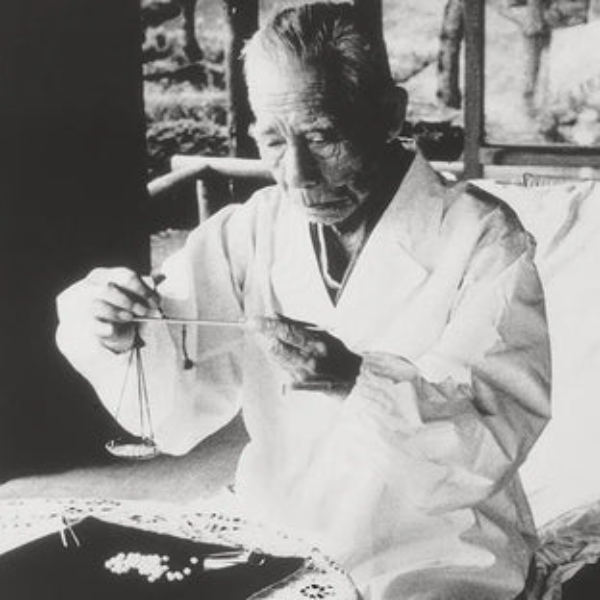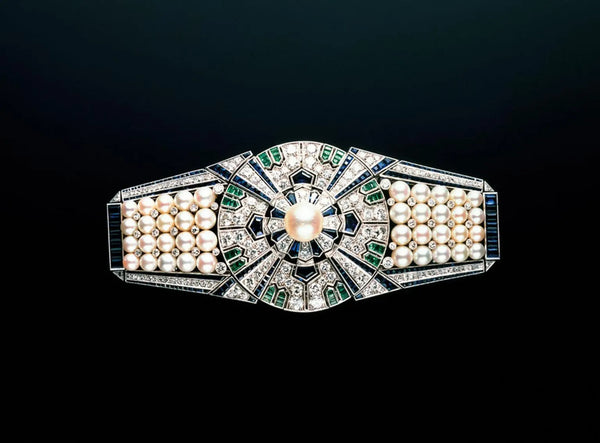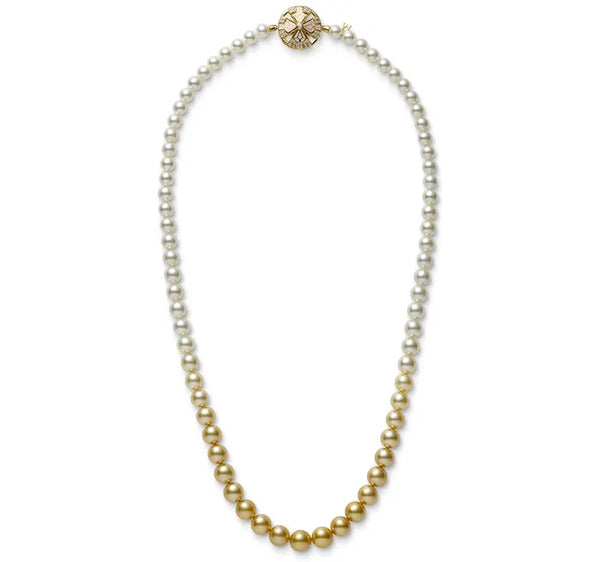
Born on January 25, 1858, on Japan’s Shima peninsula, Kokichi Mikimoto was the eldest son of a generations-old noodle-shop owner in the town of Toba. When Mikimoto was eleven years old, his father fell ill, leaving the responsibility of providing for his family on his young shoulders. Inspired to seek a new path for his family in an ever-expanding world, Mikimoto was bold in his willingness to interact with other cultures and explore opportunities beyond his family circumstances.

As a young man, he developed a keen interest in his port town’s most famous local product, Ise Pearls. These naturally occurring pearls were in high demand across the globe, and due to the high price they fetched, were nearly pushed to extinction. Concerned with the near extinction of the pearl-producing oysters of his hometown, Mikimoto embarked on the journey that would define his life, growing pearls within his own, protected oyster beds. His quest for perfection and his love for these lustrous gems became the guiding forces that inspired the birth of the Mikimoto brand.
On July 11, 1893, Mikimoto’s wife, Ume, brought in a basket of oysters for inspection. Tucked inside the folds of an oyster, she discovered the first successful pearl grown by Mikimoto. The dreams of Kokichi Mikimoto were becoming a reality. Granted his first patent for cultured pearls in 1896, Kokichi based his business in Ojima Island, where his first pearls were grown.
Disheartened with the pearl industry’s disregard of color, shape, and quality, Mikimoto had created a way to standardize the growth and harvest of pearls of the finest quality with exceptional color and shape. Mikimoto’s first pearl boutique opened in the Ginza shopping district of Tokyo in 1899. Through the skill of a scientist, the soul of an artist, and the unrelenting drive of an entrepreneur, Kokichi Mikimoto invented the cultured pearl. His creation personified Japan’s reputation for quality goods and led to the increase of global trade from the island nation.
Today, Mikimoto is the foremost producer of the finest quality cultured pearls and a world leader in the design of exceptional jewelry. The brand started by Mikimoto in 1893 has today grown into a global jewelry empire, and Kokichi’s dream of adorning the necks of women the world over is a reality.

To celebrate the 125th anniversary of Mikimoto, the brand has released a special collection of pieces which draw inspiration from the yaguruma sash clip which gained worldwide notoriety after it was exhibited by Mikimoto during the 1937 Paris International Exposition. The Yaguruma collection is a modern interpretation of the original clip, presented as a pendant, necklace, bracelet, and belt.

The Yaguruma Necklace is constructed of Akoya Cultured Pearl and Golden South Sea Cultured Pearl which range in size from 7mm to 11mm. Completed with a clasp that resembles the original sash clip in 18K Yellow Gold and diamond, the 24.8in necklace is a modern blend of color, style, and substance.

The bracelet and belt are constructed of Akoya cultured pearl and centered by a mother of pearl, quartz, and diamond clasp in 18K white gold. The clasp is an interpretation of the original clip and substantial in both size and form.

The Yaguruma pendant is available in 18K white or yellow gold. Centered by a 4mm Akoya Cultured Pearl and finished with diamond accents totaling one-quarter carat, the enamel pendant is completed by a 23.6-inch chain.
For 125 years, Mikimoto has brought the spirit of the ocean’s finest creations to wearers of fine jewelry across the globe. The Yaguruma collection to celebrate the 125th anniversary of Mikimoto is no exception. Crafted with a nod to history and the modern aesthetic for which the brand is known, the Yaguruma collection displays the finest cultured pearls in the world, just as Kokichi Mikimoto envisioned when he created his first pearl in 1893.


